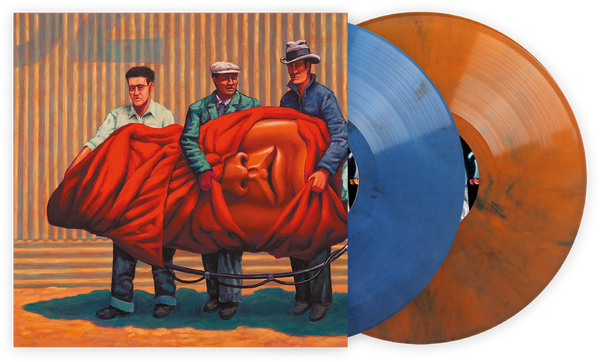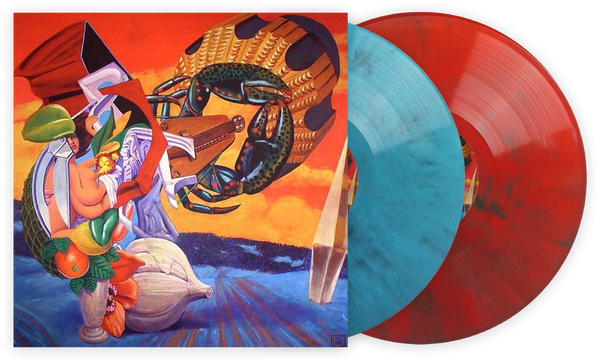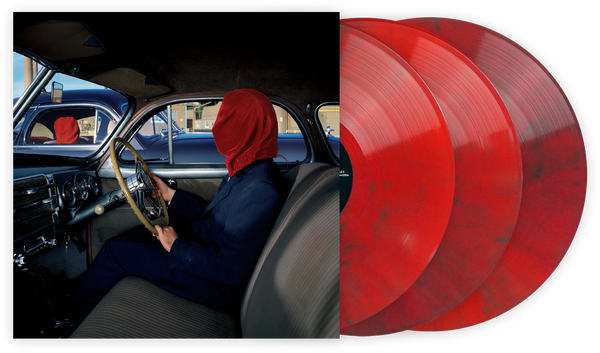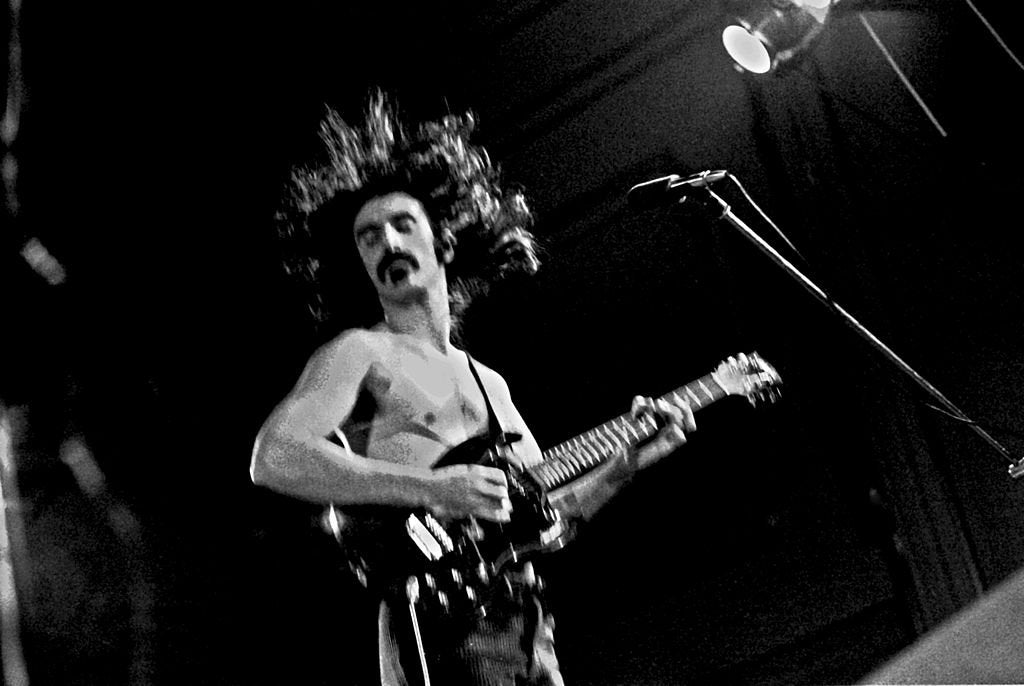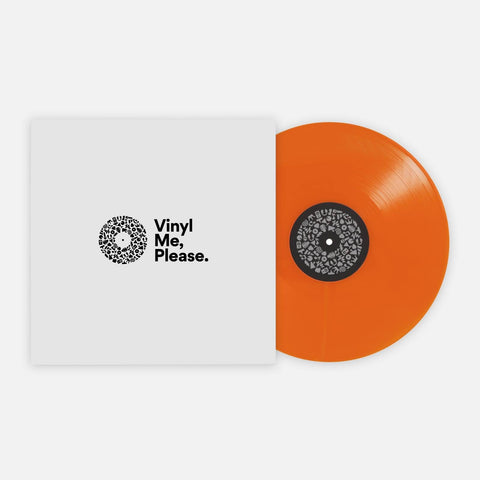The Mars Volta. If you’re a fan, then you — like me — understand what it’s like to attempt to try to get someone into this band. For one, progressive rock isn't an easy genre to get into. It’s often intentionally made to be inaccessible — these long, epic sonic journeys test one’s patience in hopes that they recalibrate the listener and expand their musical palette. This can absolutely be said for the Volta, a group that took the prog rock foundation of groups like Pink Floyd, Frank Zappa and King Crimson, and defined — and redefined — the genre for the aughts. Volta’s leaders, Omar Rodríguez-López and Cedric Bixler-Zavala, have never shied away from their self-indulgence with this band. They make what they want to hear; if you stick with them, cool — if not, well, that’s alright, too.
With six studio albums to their name, I’m a firm believer that the Volta has something for everybody, even if they don’t necessarily think this band does. Although the group has remained rooted in prog rock throughout those six albums, they’ve experimented with their sound in varying ways — from making it as maximalist as possible to releasing an album they refer to as an acoustic album (even though it’s technically not). With that, they’ve also released a handful of singles that showcase their variety, too: somber waltzes and Latin funk-rock grooves — one that even earned the band their first (and only) Grammy.
But to really experience the Volta, it’s best to take in their project as they intended: in full. Now, I know how tough this can be, especially for the indoctrinated. If it’s not the off-kilter instrumentation, it’s Bixler-Zavala’s voice. And rather than give you the response I used to give people that I thought made me sound so cool (“You just don’t get the Volta”), all I’m gonna say is this: Try and give one of these albums a chance based on how they’re categorized. Whether you’re looking for the most accessible album or maybe just a sampler EP to dip your toes into, hopefully this guide will help those curious about the Volta become either fans or, at the very least, understand why that friend of yours loves them so much.
Accessible isn’t a word commonly used with The Mars Volta, but the two albums I’d recommend are either their first album, De-Loused in the Comatorium, or their last album, Noctourniquet. The former is the better of the two, just because it feels like a Volta album: conceptual, indulgent, epic — a true prog rock classic. The latter has the unconventionality that’s been integral to the band since its inception, but it’s much more straightforward and less extravagant. That Rodríguez-López has described Noctourniquet as “future punk” is accurate. It’s an album that’s more in line with Antemasque (Rodríguez-López and Bixler-Zavala’s short-lived side band) than the Volta, and it offers a glimpse of what the latter could’ve been if it leaned more into the sensibilities of their beloved At the Drive-In with more of a dash — rather than the whole bottle — of their prog rock experimentation.
But also, De-Loused is the album that started it all. De-Loused is pretty cohesive and digestible when compared to its successors; Rick Rubin’s role as producer reportedly contributed to this cohesion. The experimentation here is rather tame; the cinematic tangents — the building silence that starts “Son et Lumière” or the cavernous water-drop echoes of the second half of “Cicatriz ESP” — aren’t overly indulgent, and truly make De-Loused feel like a concept album. The songs are structured in a straightforward manner, even if the group takes an unexpected detour in the form of lengthy jam sessions, as is the case with the aforementioned “Cicatriz ESP” (which includes dueling guitar solos from Rodríguez-López and John Frusciante) and album-ender “Take The Veil Cerpin Taxt.” All of this is meant to help bring the narrative of De-Loused alive, which, underneath Bixler-Zavala’s enigmatic lyrics, is actually a tribute to Julio Venegas. A musician, painter and writer, Venegas died on February 15, 1996, in El Paso, Texas, when he jumped from an overpass and fell onto Interstate 10 during afternoon rush hour traffic.
“He was our mentor, he taught us everything that created what we are today, basically,” Bixler-Zavala said of Venegas in a 2004 interview with Rockcircustv. “Julio is just an example of a starving artist — someone who was always struggling, and when you’re struggling, your art shows, and he was a living, walking embodiment of what art is or what it should be.”
De-Loused feels — and sounds — like an epic tragedy. There’s a somberness present throughout the album, most notably on “Televators,” its second-to-last track. “Televators” is a standout from the rest; it’s a ballad that gradually grows in intensity, driven by Rodríguez-López’s acoustic guitar and Bixler-Zavala’s vocals. If there’s any song that encapsulates the brilliance of De-Loused, it’s “Televators.” But to get there — and to get the album at all — you’ve got to listen to De-Loused in its entirety. The album is an immersive experience; the first of many Volta releases that require its listeners to venture into their prog rock abyss with full focus, even if you happen to get lost along the way.
It’s important to note that, earlier this year, the band released Landscape Tantrums: Unfinished Original Recordings of De-Loused in the Comatorium. Mars Volta hasn’t ever officially released something like this before. (This is why, up until this point, diehard fans have relied on peer-to-peer software like LimeWire and, later, YouTube, to listen to bootleg rough versions of “Roulette Dares” and “Cicatriz ESP.”) It’s a treat because it’s intimate in its rawness — from the imbalanced mix making all the instruments sound like they’re at the same levels (the final version of “Drunkship of Lanterns” should’ve kept the congas loud like the original) to “Televators” without the atmospheric soundscapes that make it what it is. Landscape Tantrums also likely includes former members like Jane’s Addiction keyboardist Linda Good and bassist (and friend and longtime collaborator of Rodríguez-López and Bixler-Zavala) Ralph Jasso, showing how these members not only contributed to what De-Loused became (the late Jack White keyboardist Isaiah “Ikey” Owens and Red Hot Chili Peppers’ Flea ended up recording keys and bass, respectively), but offered their own distinct interpretation on these songs, too. I’d recommend listening to De-Loused before Landscape Tantrums, so you can hear just how much changed from the original recordings to the final version.
Released in April 2002, Tremulant foreshadowed what was to come with De-Loused in the Comatorium’s release the following year. The three-track EP includes some of the band’s best work, specifically its last two tracks: “Concertina” and “Eunuch Provocateur.” The former is a beautifully somber waltz; the verses are quiet, Rodríguez-López’s dissonant guitar echoing between Jon Theodore’s soft drum rolls and Eva Gardner’s pronounced bass plucks. Once the chorus comes, the band is dynamic and loud, led by Bixler-Zavala’s cryptic lyrics: “Will those shadows glare, from that blank-rimmed stare in a vacancy hush.” “Concertina” can be seen as a prequel to De-Loused; like the album, the track is inspired by Bixler-Zavala and Rodríguez-López’s beloved friend, the late Julio Venegas. But it’s also believed to be about Ben Rodriguez, a former touring guitarist for the pair’s previous band, At the Drive-In, and how he contributed to Venegas’ death. “Eunuch Provocateur,” which is where the band’s debut album title comes from, is an energetic end to the EP; the Latin rhythm that drives the verses served as a precursor to similar songs like De-Loused’s “Drunkship of Lanterns,” and showcases how the band brilliantly fuse their Latin and punk rock roots to create a distinct sound.
By the time of their sophomore release, Volta was full-on prog rock. Only one song from Frances the Mute is under 10 minutes: The band’s first and only charting song “The Widow” — that I’m assuming is Kanye West-endorsed based on this tweet — which ends with a lengthy outro that obviously didn’t make the cut for the track’s radio version. The rest are above 10 minutes, with one track coming in at 32 minutes and 32 seconds (“Cassandra Gemini”). Frances is the first Volta album that really feels self-indulgent, and I mean that in a good way. As much as fans agree or disagree about Rodríguez-López and Bixler-Zavala’s unashamed musical self-indulgence, it adds to the allure of the band, and Frances is arguably the most cohesive — albeit still challenging — listening experience and example of this. Album-opener “Cygnus...Vismund Cygnus” ends with three minutes of ambient noise. “Cassandra Gemini” is divided into eight parts. Frances tests one’s patience, not only with its song length, but with its experimentation, rewarding listeners with yet another ambitious project that has some of the band’s greatest musical moments.
“Cygnus...” is brilliantly paced: The off-kilter groove of the first half is so powerful and punchy that when the bridge comes along, you’ll welcome its ambient silence warmly, giving you a moment to catch your breath before the groove returns even harder. And, of course, there’s “L’Via L’Viaquez,” the Guitar Hero World Tour-approved track that includes two blistering guitar solos from Frusciante, as well as a phenomenal piano solo from the late legendary salsa pianist (and one of Rodríguez-López’s biggest influences) Larry Harlow.
Frances foreshadowed Rodríguez-López’s dictatorial approach up until their last album, Noctourniquet. Where De-Loused had Rubin to help Rodríguez-López rein in his more avant-garde tangents, Frances (and every Volta album after) was produced by Rodríguez-López only. This is, presumably, why this album is more ambitious and non-traditional. Rodríguez-López channeled his inner film director and directed his bandmates to bring his artistic vision to life.
Amputechture is considered the album that split Volta fans in two: those that wanted the band to return to an experimental — but still digestible — sound à la De-Loused, and those that wanted the band to go further into the prog rock unknown like they did with Frances. Those of the latter category were surely more receptive to Amputechture, which is easily one of the band’s most challenging releases. Three of Amputechture’s tracks are over 10 minutes long, with each one including multiple musical movements. Because of this, Amputechture is arguably the Volta’s most cinematic album, with Rodríguez-López implementing a very directorial approach to the project’s creation.
“The process I’ve used on the last two Mars Volta albums is that everything is tracked out of order and out of sequence,” he said in a 2006 interview with Guitar World. “One day I might track everything that’s in one particular key. Another day I might track everything very soft, or everything that’s loud and abrasive. So the players don’t really have a context of what’s coming before and after, or how they’re interacting in the song.”
Amputechture is arguably the Volta’s most uncompromising endeavor and painter Jeff Jordan’s cover art for it embodies that. Unnerving and bizarre, but also strangely beautiful and captivating, Jordan’s piece, “Big Mutant,” is a fitting image for the album. If you find yourself deterred by Amputechture, at the very least listen to Juan Alderete’s ferocious bass solo at the beginning of “Day of the Baphomets,” and then watch this video of the group playing the song live on The Henry Rollins Show to see just how brilliant Alderete’s solo is.
If you’ve ever seen the 2010 comedy Get Him to the Greek, then you’ve heard a portion of Scabdates before. A culmination of live performances from May 2004 to May 2005, Scabdates fuses these performances with field recordings — from crying babies to backstage banter — to create a live album that’s supposed to sound like it came from one single performance. The end result makes for an unconventional live album that captures the enigmatic ethos of the Volta, as well as their energetic and improvisational live performances. For a more straightforward live album experience, there’s also their 2003 Live EP, which is made up of four recordings: two from London’s XFM Studio (“Roulette Dares (The Haunt Of)” and “Drunkship of Lanterns”) and two from London’s Electric Ballroom (“Cicatriz ESP” and “Televators.”) Although neither record is available on streaming services, they are available on YouTube.
The Bedlam in Goliath has what’s easily the most fascinating backstory of any of the Volta’s albums. On a trip to Jerusalem, Rodríguez-López bought Bixler-Zavala a Ouija board as a gift, which the two used during their 2006 tour with the Red Hot Chili Peppers. The more they used it, the more strange things began to happen to them while they wrote and recorded the album — from Rodríguez-López’s home studio flooding to the album’s original engineer having a mental breakdown. In hopes of undoing the curse the board put on the album, Rodríguez-López broke it in half and buried it.
Bedlam’s origin story fits the overall apocalyptic atmosphere of the album. Each song has a darkness and intensity to it, primarily thanks to the dynamic and powerful drumming of Thomas Pridgen. But in its heaviness, Bedlam offers some of the band’s most popular songs, including the Grammy-winning single, “Wax Simulacra,” and “Goliath,” the latter of which is a faster — and dramatically less chill — version of “Rapid Fire Tollbooth” from Rodríguez-López’s Se Dice Bisonte, No Búfalo album. Honestly, Bedlam is the least chill Volta album of the band’s discography, which is a part of its appeal. It’s their loudest and hardest album, with each member playing — and in Bixler-Zavala’s case, singing — their respective instruments as if their life depended on it. Which, considering that the Ouija board may or may not have led to Bixler-Zavala needing foot surgery, maybe their lives did depend on it.
This might be a hot take, but when it comes down to the Volta’s two non-concept albums (Amputechture and Octahedron) the latter is the better choice overall. Not only does the follow-up to Bedlam include more memorable songs — most notably the powerhouse that is “Cotopaxi” and the beautiful opener “Since We’ve Been Wrong” — but it’s such a refreshing departure from everything the band had done up until that point. Described by Bixler-Zavala as “our version of what we consider an acoustic album,” Octahedron is notably bare. For one, Adrián Terrazas-González, as well as rhythm guitarist and sound manipulator Paul Hinojos, were no longer a part of the band. Also, Isaiah “Ikey” Owens, who had contributed keys to the band’s albums ever since De-Loused, wasn’t on the album.
“It’s like we got a whole new band,” Volta member (and one of Rodríguez-López’s brothers) Marcel Rodríguez-López said in a 2009 interview with Drum magazine. “It’s two less members — we got to play differently.”
It’s this bareness that makes Octahedron so fascinating. So much of the Volta is grandiose: How much can we fit into one song? How many sounds can we fit into one song? On Octahedron, it’s obvious that they weren’t really concerned with these questions. They went for lighter and more straightforward songs that show they can be structurally conventional while maintaining the sound they’re known for. I would go so far as to say that “Since We’ve Been Wrong” is one of their best songs, especially from a songwriting standpoint. The beauty of its two counter guitar melodies, Bixler-Zavala’s infectious hook and Pridgen’s thundering drums that come at the halfpoint — it’s so brilliantly paced and structured, but still remains unquestionably the Volta.
Elijah Watson is the Senior News & Culture Editor for Okayplayer. He has written for publications like The FADER, the Daily Beast and Complex. His work has been included in books like the Best Damn Hip Hop Writing: 2018, and he’s also a Webby Award winner. When he’s not writing or editing, he’s usually sleeping or watching video game explainer videos on YouTube.
Related Articles
Join the Club!
Join Now, Starting at $36Pages

